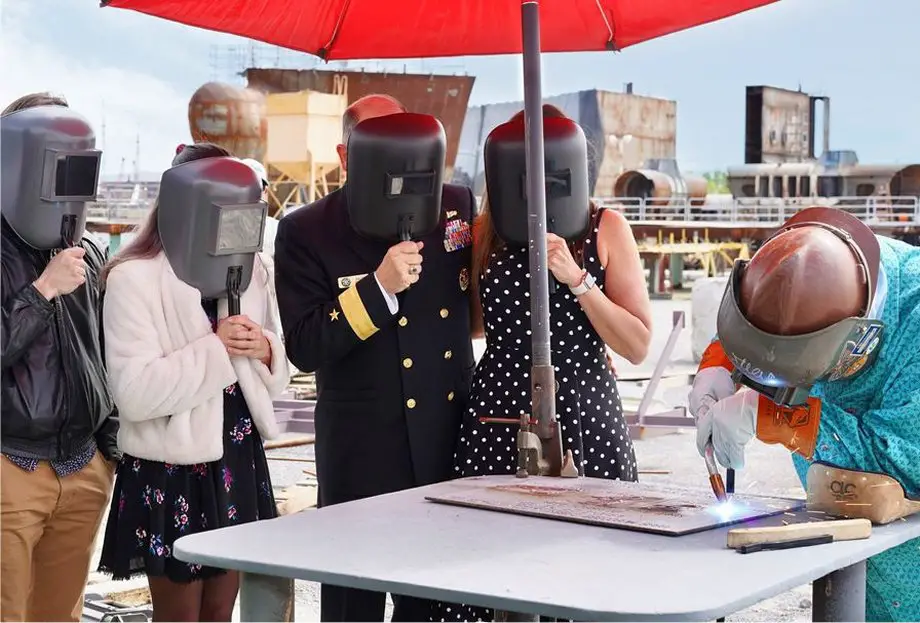According to information published by Bollinger Shipyards on March 21, 2024, commemorated the commencement of construction for the USNS Muscogee Creek Nation, a Navajo-class Towing, Salvage, and Rescue Ship (T-ATS), with a ceremonial keel laying in Houma. This ship marks the tenth in its class and symbolizes the fifth vessel undertaken by Bollinger since the shipyard took over the program in April 2021.
Follow Navy Recognition on Google News at this link
 Keel laying ceremony of the USNS Mucogee Creek Nation. (Picture source: Bollinger Shipyards)
Keel laying ceremony of the USNS Mucogee Creek Nation. (Picture source: Bollinger Shipyards)
Rescue and salvage ships, designated with the hull classification symbol ARS, play a crucial role within the United States Navy by providing aid to stricken vessels and conducting a variety of salvage operations. These ships are equipped for combat salvage, lifting, towing, retracting grounded vessels, off-ship firefighting, and manned diving operations.
Historically, the United States Navy has utilized several classes of rescue and salvage ships, starting with the conversion of Lapwing-class minesweepers into salvage ships during World War II.
Following this, the Diver class was introduced, serving from October 1943 until the last vessel was decommissioned in July 1979. These ships were followed by various other classes, including the Bolster and Safeguard classes, with the latter serving as commissioned auxiliaries until September 2007 and some continuing service under the Military Sealift Command (Wikipedia).
The latest advancement in this category is the Navajo-class, a new series of Towing, Salvage, and Rescue Ships (T-ATS) constructed to replace the aging fleet of Powhatan-class fleet ocean tugs and Safeguard-class rescue and salvage ships.
The Navajo-class vessels are designed to provide ocean-going tug, salvage, and rescue capabilities to support US Navy fleet operations. Featuring a length of 263 feet, a beam of 59 feet, and a displacement of 5,110 tons, these ships are equipped with modern systems, including a dynamic positioning system that allows them to perform a wide range of missions, from towing and salvage to humanitarian assistance and oil spill response. Their deck is designed to accommodate various mission-specific modules, enhancing their operational flexibility.
The Navajo-class program plans for a total of ten ships, with Gulf Island Fabrication initially chosen for their construction. However, in 2021, the contract and shipyard were sold to Bollinger Shipyards. The lead ship, T-ATS-6 (Navajo) was launched in May 2023.



